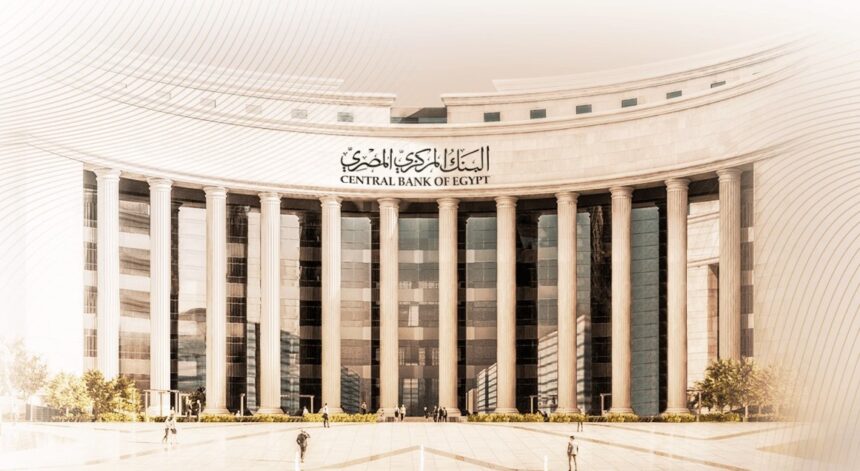The Central Bank of Egypt (CBE) announced that the aggregate financial position of banks operating in the domestic market, excluding the CBE itself, reached EGP 24.023trn in June 2025, compared to EGP 22.673trn in March. This EGP 1.35trn surge in just three months underscores not only the resilience of Egypt’s banking sector but also its capacity to absorb economic pressures while sustaining growth momentum.
Lending and discount balances
On the assets side, the data shows that cash balances at banks totalled EGP 212.5bn, providing the sector with a solid liquidity cushion. Balances with banks inside Egypt climbed to EGP 3.041trn, while those with banks abroad rose to EGP 1.574trn, reflecting the continued diversification of financial linkages both domestically and internationally.
Lending and discount balances — a key driver of economic activity — rose to EGP 9.322trn in June, compared with EGP 9.052trn in March. This expansion highlights banks’ sustained role in financing businesses and individuals alike. Meanwhile, banks’ securities portfolios and treasury bill investments increased to EGP 7.113trn, cementing their position as a vital channel for financing government debt. Other assets not specified in detail reached EGP 2.759trn, reflecting the breadth of banks’ holdings.
Liabilities
On the liabilities side, banks’ capital base expanded to EGP 596.5bn, while reserves rose impressively to EGP 999.5bn, signalling a sector that is both well-capitalised and adequately buffered against risks. Provisions amounted to EGP 637.8bn, underscoring the prudence of banks’ risk management strategies.
Interbank obligations also registered notable volumes: EGP 1.654trn in obligations between banks inside Egypt, while foreign obligations stood at EGP 623.4bn. The largest liability item, however, was customer deposits, which grew strongly to EGP 14.887trn, up from EGP 14.32trn in March. This represents an increase of EGP 567bn in just three months — clear evidence of depositor confidence in the system.
Bond balances and long-term loans stood at EGP 886.3bn, while other liabilities reached EGP 3.738trn, illustrating the depth and complexity of the sector’s balance sheet.

Non-performing loans
In terms of asset quality, the CBE highlighted continued improvements. The ratio of non-performing loans (NPLs) declined to 2.1% of total loans in June, down from 2.2% in March. This marginal but meaningful decline demonstrates the sector’s tightening credit risk practices.
At the largest institutions, performance was even stronger: NPL ratios stood at 1.9% for the top 10 banks and 1.6% for the top five. Provisioning levels also improved substantially, with coverage ratios rising to 90.3% overall, compared to 87.2% in March. For the top 10 banks, coverage reached 93%, while the top five achieved an impressive 94.6%.
In absolute terms, total provisions set aside for doubtful debts amounted to EGP 637.8bn, with the top 10 banks accounting for EGP 526.6bn and the top five EGP 469.2bn. Reserves, meanwhile, stood close to EGP 1trn, further underlining the sector’s stability.
Private sector lending
One of the more positive shifts was seen in lending to the private sector. Its share of total bank lending rose to 43.3% in June, compared to 42.3% in March. While lending is still heavily skewed towards government and public sector entities, this uptick suggests a gradual rebalancing towards private enterprise.
At the largest banks, the share was 37.2% for the top 10 and 33.2% for the top five, slightly below the sector average. Still, the broader trend reflects improving credit flows to businesses and households — essential for job creation and economic dynamism.
In total, lending balances reached EGP 9.322trn, marking an increase of about EGP 270bn in a single quarter.

Loans-to-deposits ratio
The overall loan-to-deposit (LDR) ratio — a critical indicator of how effectively banks transform deposits into credit — dipped slightly to 63.3% in June, from 63.6% in March. This marginal decline suggests that while deposits are growing robustly, lending growth remains steady rather than aggressive.
Breaking it down: the LDR was 64.1% at the 10 largest banks and 66.4% at the top five. Local currency LDRs improved to 54.7%, up from 53.4% in March, reflecting increased lending in Egyptian pounds. Conversely, the foreign currency LDR declined to 88.6%, down from 90.7%, hinting at more cautious foreign currency lending.
Customer deposits
Customer deposits remain the bedrock of bank funding in Egypt. By June 2025, deposits totalled EGP 14.887trn, a remarkable surge from March. Concentration remains high, however, with the top 10 banks holding 77.8% of deposits (EGP 11.589trn) and the top five accounting for 68.7% (EGP 10.220trn).
Interestingly, the sector’s deposits-to-assets ratio edged lower to 62.1% in June, compared with 63.2% in March. This indicates that asset growth is now outpacing deposit mobilisation. Liquidity ratios, however, improved: the average local currency liquidity ratio rose to 38.6%, while the foreign currency liquidity ratio increased to 74.4%, signalling ample liquidity buffers.

Securities and treasury bills
Banks’ holdings of government securities and treasury bills continued to rise, reflecting the sector’s central role in financing the budget deficit. Investments reached EGP 7.113trn by June, up from EGP 6.880trn in March.
Once again, concentration was evident: the 10 largest banks held EGP 5.768trn, while the top five accounted for EGP 5.144trn. Securities portfolios, excluding T-bills, represented 20.2% of total assets, a slight increase from March.
Capital base
Capital adequacy strengthened across the system, with the ratio climbing to 18.6% in June, compared with 18.3% in March — well above the Basel III minimum of 10.5%. The Tier 1 capital ratio also improved to 15.4%, while the common equity Tier 1 ratio edged higher to 13.2%.
Although the leverage ratio remained steady at 7.6%, the CBE reaffirmed its requirement that this indicator must not fall below 3%, ensuring continued stability.
Net open foreign exchange positions
The ratio of net open foreign exchange positions to total capital expanded to 4.8% in June, compared with 3.9% in March. At the largest banks, this climbed even higher — 5.9% at the top 10 and 6.8% at the top five. While still well below the regulatory ceiling of 20%, the figures reflect increased foreign currency activity amid shifting trade and investment dynamics.
Net bank profits
Perhaps the most striking development was in profitability. Banks operating in Egypt recorded net profits of EGP 274.9bn in June 2025, a dramatic jump from EGP 152.8bn in March. This surge in earnings illustrates the banking sector’s resilience and strong operating performance in a challenging environment.
Net interest income reached EGP 503.6bn, while net operating income rose to EGP 661.1bn. Total expenses, meanwhile, stood at EGP 386.2bn.
The 10 largest banks captured 77.2% of sector profits, generating EGP 212.2bn, while the top five earned 64.6%, or EGP 177.7bn. Strong interest income was a key driver, with the top banks reaping significant gains from their loan books and securities holdings.

Returns and profitability ratios
Return metrics remained robust. The return on average equity held steady at 39%, while the return on assets was 2.6%. The net interest margin stood at 5.8%, reflecting efficient management of lending and deposit costs.
At the top banks, performance was broadly similar, with only slight variations: the top 10 reported ROE of 39.1% and ROA of 2.5%, while the top five registered ROE of 37.6% and ROA of 2.3%.
Outlook
Overall, the CBE’s June 2025 data paints a picture of a banking sector in robust health — capitalised, profitable, liquid, and steadily expanding credit to the private sector. While challenges remain, particularly in maintaining balanced lending between public and private borrowers, the sector has shown remarkable strength in mobilising deposits and delivering record profits.
As the second half of 2025 unfolds, attention will turn to how banks balance their growing exposure to government securities with the need to support private sector credit, all while maintaining the strong risk and capital buffers that underpin confidence in the financial system.



